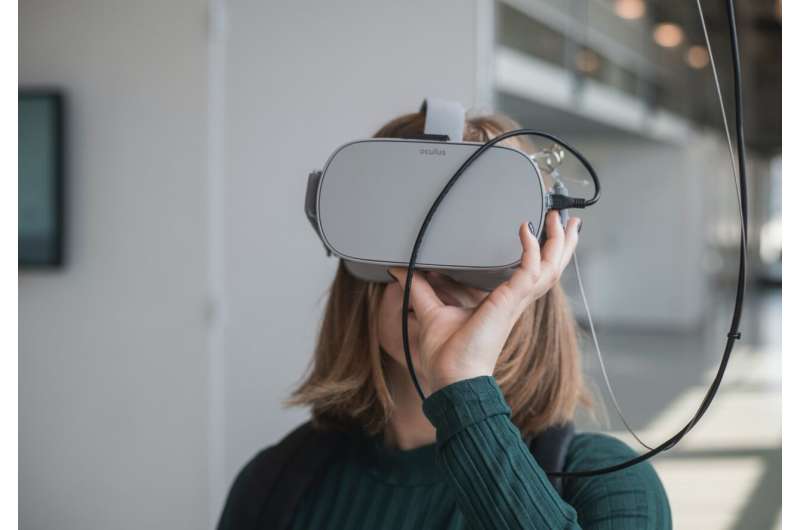Virtual reality has negative side effects—new research shows that can be a problem in the workplace

Some employers are excited about swapping out computer monitors for virtual reality headsets, but the side effects of using VR are not completely understood. In a recent study, my colleagues and I propose 90 factors that could influence VR side effects in the workplace. In another study, we suggest guidelines to reduce these negative symptoms.
Our analysis considers over 350 studies to identify a range of VR side effects. Some negative symptoms of VR use—like headaches, tiredness, eyestrain and neck and shoulder pain –are familiar to those workers who sit at a computer all day.
But the nature of VR introduces new avenues for discomfort, such as disorientation, dizziness, nausea and increased muscle fatigue. Users can be overwhelmed with too much information, and sudden or intense sources of stress—like unexpected noises when talking in front of a virtual audience—can diminish attention and memory.
There are many factors that can affect the frequency and severity of these side effects. Some of these characteristics relate to the virtual environment content—for example, how complicated the scene is or the way VR reproduces user movements. Others have more to do with the user, such as age or how long they’re immersed in the VR simulation.
Although more research is needed to identify the exact relationship between side effects and their contributing factors, our study suggests several guidelines to mitigate side effects. Each individual’s risk level is unique, but there are basic things anyone can do, like taking regular breaks, not using VR for more than 30 minutes at a time, and stopping use immediately when any symptoms start.
Studies have found that 80% of VR users report mild to severe short-term side effects. Symptoms can make it harder to efficiently do basic tasks like reading and writing emails.
Nonetheless, several tech giants, like Meta and Microsoft, are promoting VR technology as the future of the workplace. But to safeguard workers, employers need a better understanding of the negative side effects of VR.
Some government organizations, both in the U.S. and abroad, have already begun to identify safety concerns and propose guidelines for mitigating the side effects of VR. While in line with our study’s findings, these safety guidelines are often very broad, and some have yet to be finalized.
More research is needed to improve the quality of evidence. One way to gather more data is to use physiological sensors and machine learning models to detect VR side effects and better link each factor to a given effect.
Although researchers can identify influential factors, we don’t yet fully understand which ones are linked to specific side effects—or how strong those connections are. Researchers believe that some characteristics are connected to several VR side effects, but there’s some redundancy when looking at the list of symptoms.
At best, following suggested guidelines could reduce the risks of using VR. With the current level of evidence, it’s difficult to assess how high these risks are. Most assessments about VR side effects are short term. Long-term studies are just starting to be launched or published. Additional research is crucial to ensuring that VR helps workers rather than harming them.
This article is republished from The Conversation under a Creative Commons license. Read the original article.![]()
Citation:
Virtual reality has negative side effects—new research shows that can be a problem in the workplace (2023, August 9)
retrieved 9 August 2023
from https://techxplore.com/news/2023-08-virtual-reality-negative-side-effectsnew.html
This document is subject to copyright. Apart from any fair dealing for the purpose of private study or research, no
part may be reproduced without the written permission. The content is provided for information purposes only.
For all the latest business News Click Here

